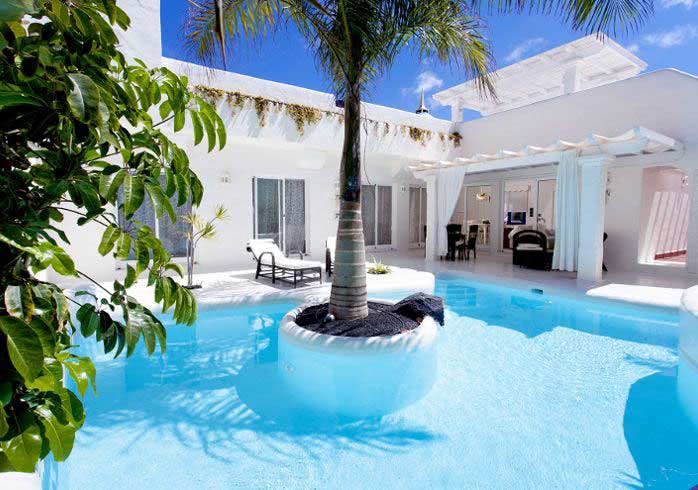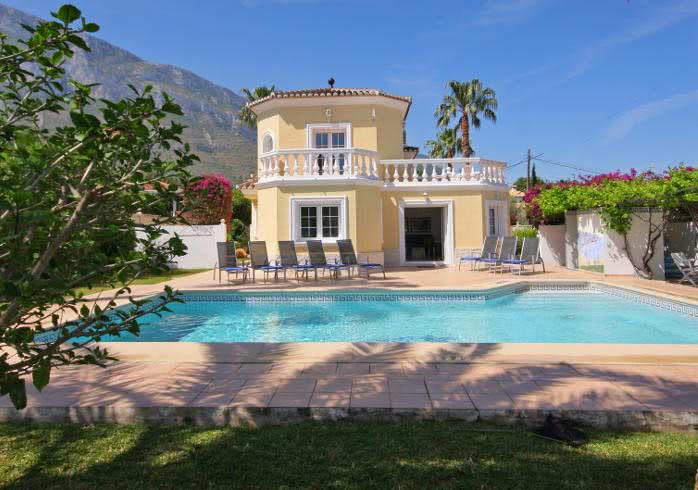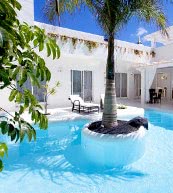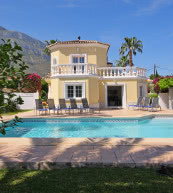Why aren't all the offers displayed?
map
This is how holiday rental owners described Parada de Sil
Ribeira Sacra is a Spanish Denominación de Origen (DO) (Denominación de Orixe in Galician) for wines located in the south of the province of Lugo and in the north of the province of Ourense, in Galicia, Spain. It extends over the territories of 17 different municipalities that conform a zone
...
show more and entity called Ribeira Sacra, which could be translated as "Sacred Shore". The vineyards are planted on the steep slopes of the valleys and canyons of the rivers Miño and Sil. The area acquired official Denominación de Origen status in 1997.
Three types of varietal wine are produced: red Mencía, white Albariño and white Godello.
It is generally believed that grape growing and wine production were introduced to the area by the ancient Romans. It is said that the legendary spiced Vinos de Amandi were shipped to Rome along with the lampreys fished out of the river Miño, to be served at the table of the emperor.
It is believed that Ribeira Sacra takes its name from 18 monasteries and hermitages that were founded in the early Middle Ages between the 8th and 12th centuries and which are located in the inaccessible river valleys. It was the monks who replanted the vineyards for their own consumption and maintained the grape-growing and wine-producing tradition until modern times. The most important monasteries are:
* San Pedro de Bembibre
* Taboada dos Freires
* San Paio de Diomondi
* Santo Estevo de Ribas de Miño
* Santa María de Pesqueiras
* Montederramo
* San Pedro de Rocas
* Ferreira de Pantón
* San Paio de Abeleda
* Santa Cristina de Ribas de Sil
* San Estevo de Ribas de Sil
show less
show more and entity called Ribeira Sacra, which could be translated as "Sacred Shore". The vineyards are planted on the steep slopes of the valleys and canyons of the rivers Miño and Sil. The area acquired official Denominación de Origen status in 1997.
Three types of varietal wine are produced: red Mencía, white Albariño and white Godello.
It is generally believed that grape growing and wine production were introduced to the area by the ancient Romans. It is said that the legendary spiced Vinos de Amandi were shipped to Rome along with the lampreys fished out of the river Miño, to be served at the table of the emperor.
It is believed that Ribeira Sacra takes its name from 18 monasteries and hermitages that were founded in the early Middle Ages between the 8th and 12th centuries and which are located in the inaccessible river valleys. It was the monks who replanted the vineyards for their own consumption and maintained the grape-growing and wine-producing tradition until modern times. The most important monasteries are:
* San Pedro de Bembibre
* Taboada dos Freires
* San Paio de Diomondi
* Santo Estevo de Ribas de Miño
* Santa María de Pesqueiras
* Montederramo
* San Pedro de Rocas
* Ferreira de Pantón
* San Paio de Abeleda
* Santa Cristina de Ribas de Sil
* San Estevo de Ribas de Sil
show less
source: Schmidt
Sorting:
-
Parada de Sil, Galicia (Interior of Galicia)
Holiday home for max. 7 adults + 1 child
Property no. 448499
from USD 2,008for 1 weekApprox. 250 m², 4 bedrooms, 3 bathrooms, pets are allowed (max. 1), TV, washing machine, dishwasher, non-smoking property, sea approx. 140 m, private pool, farm holidays, sea/lake view, Finca, Country estate, natural stone house







